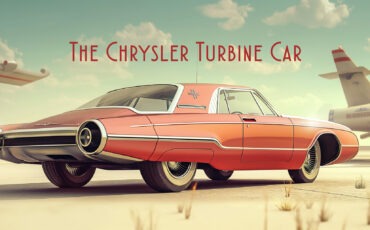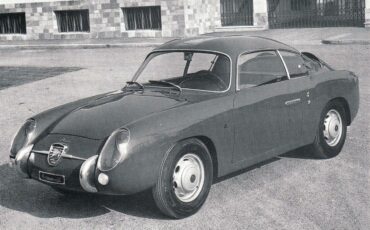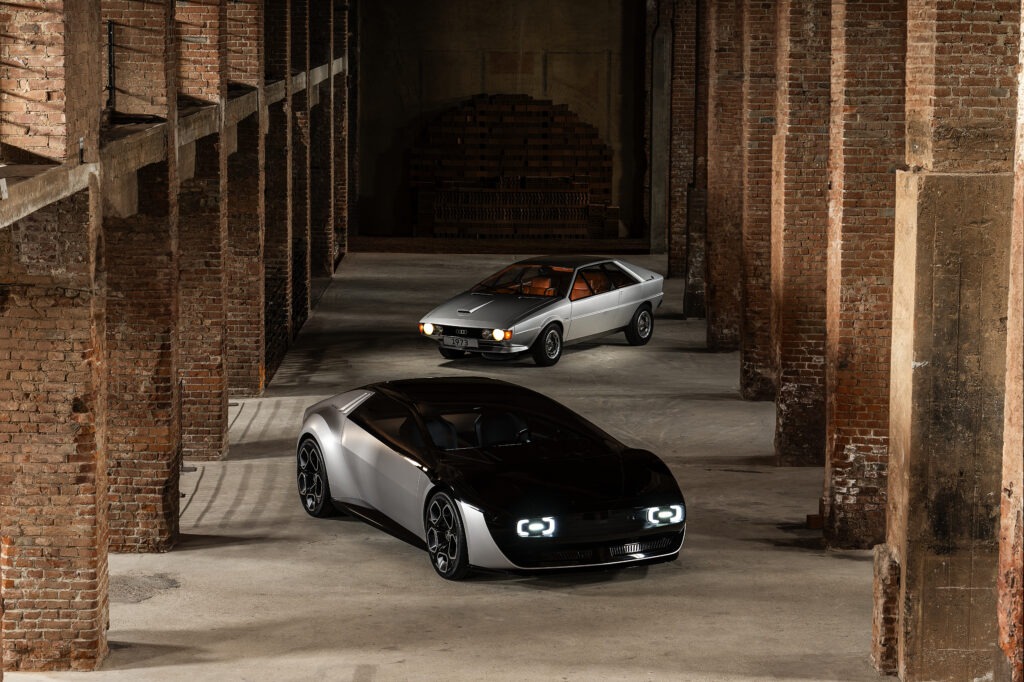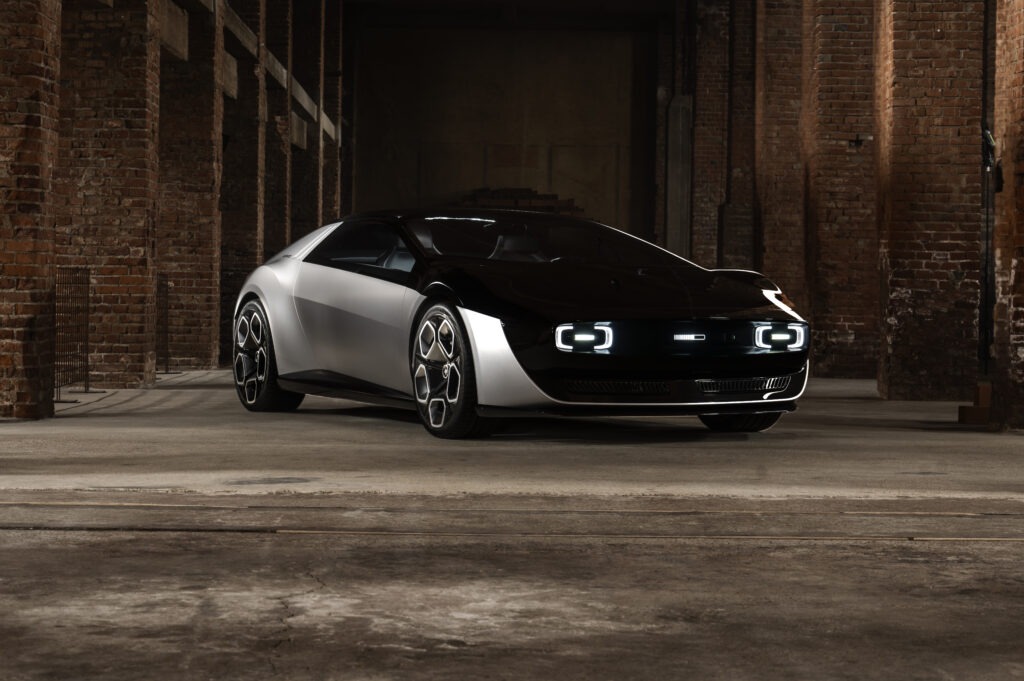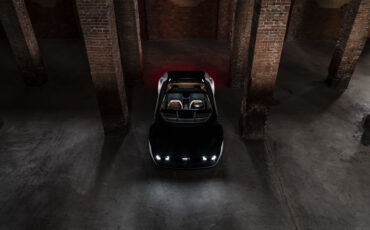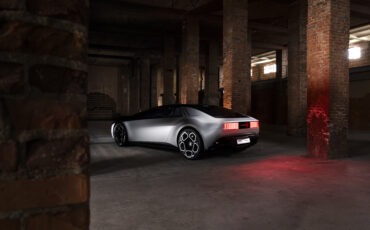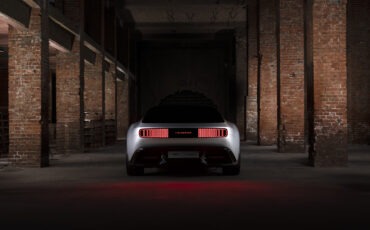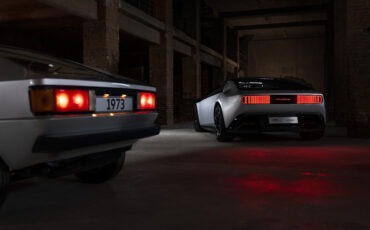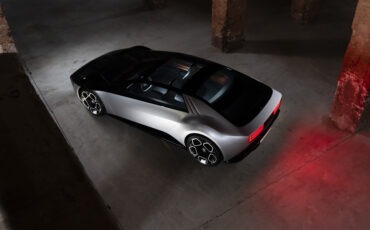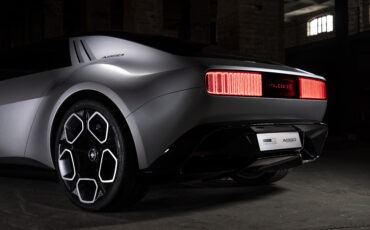
The Lancia Flaminia was born as the Lancia flagship model of the 50’s and 60’s with the aim to replace the glories of the previous Aurelia. More or less when, in 1955, the Lancia family sold the majority shareholding to the Pesenti group, a small revolution took place in the technical department of Lancia: engineer Vittorio Jano, who moved to Ferrari in 1955 was replaced by Antonio Fessia, an illustrious and highly experienced technician.
Fessia was in charge of the Flaminia project, and the first speciment, the sedan version, sees the light in April 1956. It was a voluminous limousine, designed by Pininfarina, equipped with a V6 engine, delivering about 100 HP and capable to reach 160 km/h. Compared to the Aurelia, it had a completely new design language, but with mechanics that are certainly not revolutionary. However, the development of this new model toke more than a year and the final version, was finally unveiled at the 1957 Geneva Motor Show.
The market success of the Flaminia sedan was unquestionably good, but Lancia had to think about how to replace the sportier versions like the Aurelia B20 Coupe and the B24 Spider. As usual, the Turin-based company relied on the best italian coachbuilders. The sporty Flaminia versions were exhibited at the 1958 Turin Motor Show: three Coupè “Fuoriserie” versions were made respectively by Pininfarina, Touring and Zagato which were sold officially by Lancia’s car dearlers.
In addition to these, 5 special Flaminia one-off’s were also built:
1959 Lancia Flaminia Spider (Vignale)
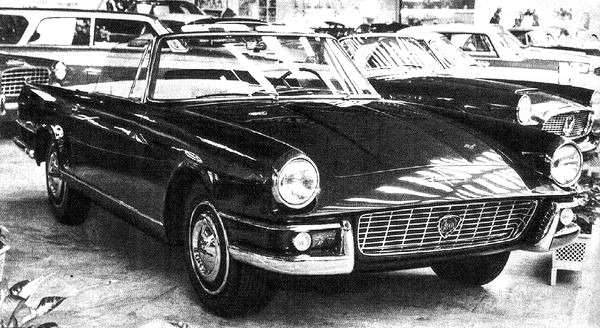
At the 1959 Turin Motor Show, Lancia exhibited only closed versions of its Flaminia including a sedan and a coupé. On the other hand coachbuilder Vignale, based on a design of Giovanni Michelotti, unveiled a spider built on the 252 cm wheelbase Flaminia chassis equiped with the 119 hp engine which we already have seen on the Touring and Zagato coupés. This open version of the Flaminia was built by Vignale as attempt to win the commission for the official Lancia Cabriolet against Touring without success. The one-off featured a dark blue paint, defined at the time as “midnight light”, leather interior and a foldable top which disappears in the trunk. The air intake on the bonnet faced in an unusual way the windshield.
1960 Lancia Flaminia Coupé "Loraymo" (Motto)
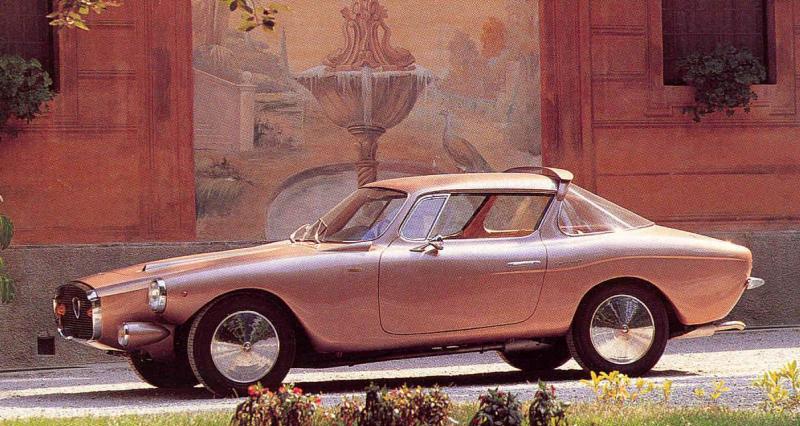
The eclectic and less known Turin coachbuilder Rocco Motto was hired by famous designer Raymond Loewy to built, after his design, an extremely original body for a Flaminia Coupé. Motto, who among other things was a specialist in aluminum processing, accepted and was able to finish the work for the 47th Paris Motor Show, which toke place from 6 to 16 October 1960. Here, the metallic dark amber painted car made its debut for the first time. For the name of his creation, the designer, chose his design studio’s telegram address “Loraymo”, which is a combination of letters included in his name and surname: LOewy RAYMOnd. Among the many peculiarities and quirks we can notice the adjustable wing placed on top of the rear window (this feature will be adopted later by two other Lancias, the Stratos and the Delta Integrale Evoluzione), whose purpose is to reduce the low-pressure aerodynamic turbulence. The “Loraymo” is equipped with the Flaminia type 823.00 engine tuned by the Turin specialist Nardi. Loewy, who commissioned the car for its personal use, first used the Loraymo in Europe and later in America. A few years after the designer’s death (14th July 1986), the car was found by the president of the Lancia Club of America who donated it to the Lancia museum, where it was completely restored.
1961 Lancia Flaminia "Amalfi" (Boneschi)
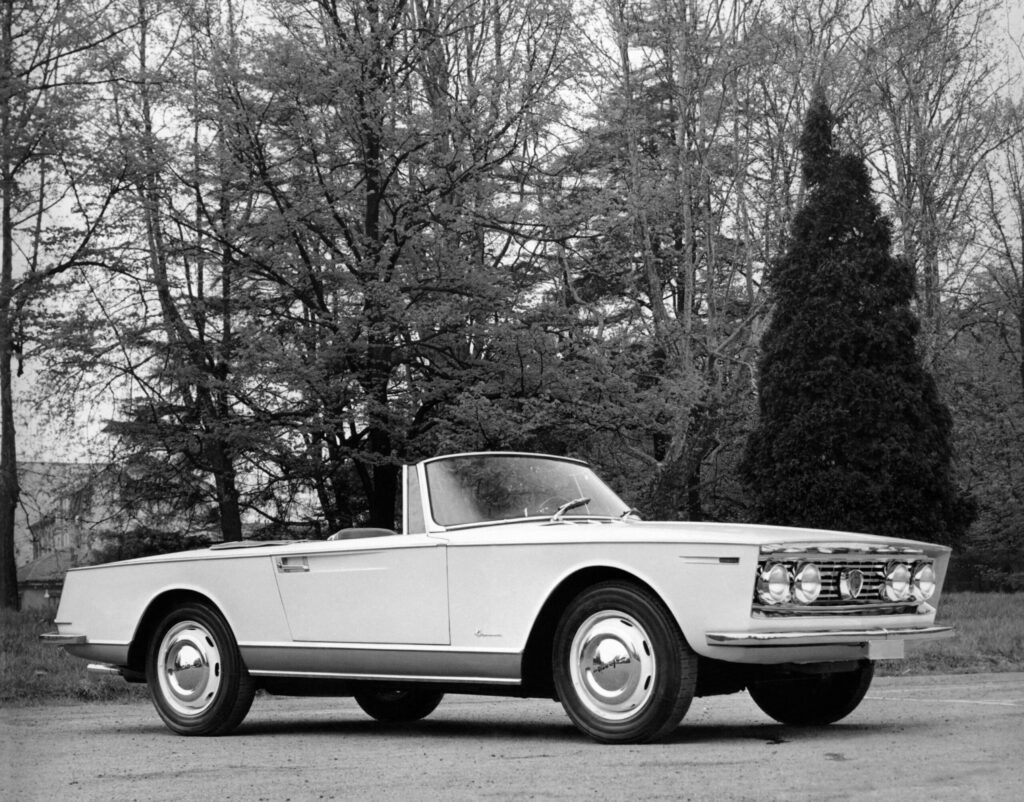
In April 1961, the Milanese coachbuilder Boneschi built this convertible on one of the Flaminia chassis which in origin was destined for Touring (chassis 824.04, therefore equipped with the 119 hp engine). The car, called “Amalfi”, received mixed opinions due to its angular lines (called Linea Tesa) created by world famous designer Rodolfo Bonetto, who at the time collaborated on several project with Boneschi. It remained a one-off and is still in existance in very good shape.
1963 Lancia Flaminia Speciale Coupé (Pininfarina)
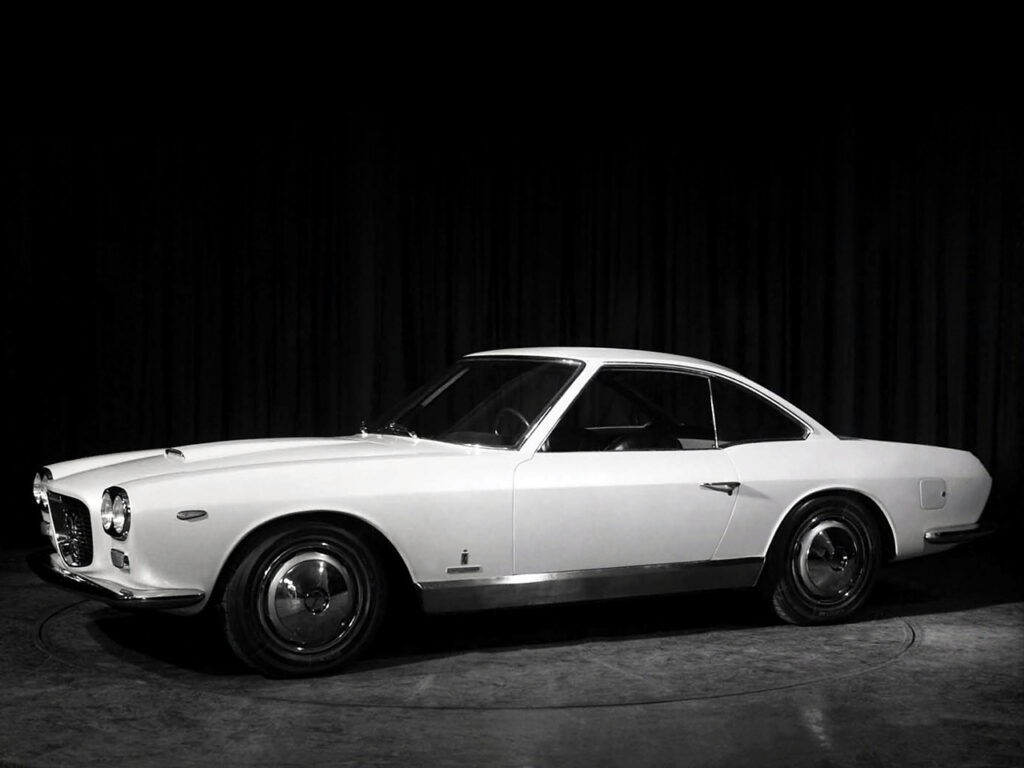
At the 1963 Turin Motor Show Pininfarina unveiled a coupé, designed by Tom Tjaarda, characterized by a stylistic contrast between the front – clearly inspired by its smaller sister, the Flavia coupé – and the rest of the car, which was very multifaceted and elusive. The passenger compartment features a black leather upholstery, the seats are anatomically shaped; the dashboard is fully padded to better protect the occupants in the event of any collisions. The car exhibited at the Turin Motor Show reappears, unaltered, at the 1964 Geneva Motor Show. After the 1965 Shows, the Flaminia Speciale became Battista Pininfarina’s personal car. New rear lights were mounted and the color changed to metallic silver. Pininfarina kept the car until 1972, when an American doctor managed to negotiate (after 6 month) its purchase for $ 4,200. The new owner, Dr. Richard Buckingham was the 63rd member of the Lancia American Club and president for 15 years. The car had only 9100 km (5642 miles), when he bought it. It was shown regularly at exhibitions and competitions, including the 1989 Pebble Beach Concours d’Elegance, where the car reached 3rd place in his class. Later the car was sold to the Matsuda collection in Japan, and there the car was restored to its original pearl white paint. In 2003 it was sold to a collector in British Columbia, Canada, and then to its fourth owner in 2008, Mr. Heumann, President of the Pebble Beach Concourse d’Elegance. Collector Corrado Lopresto purchased the car in 2011 and brought it back to Italy. The car remains essentially original with only 19,000 km (11,780 miles). Today the car is very well preserved and in very good, basically original condition.
1969 Lancia Flaminia "Marica" (Ghia)
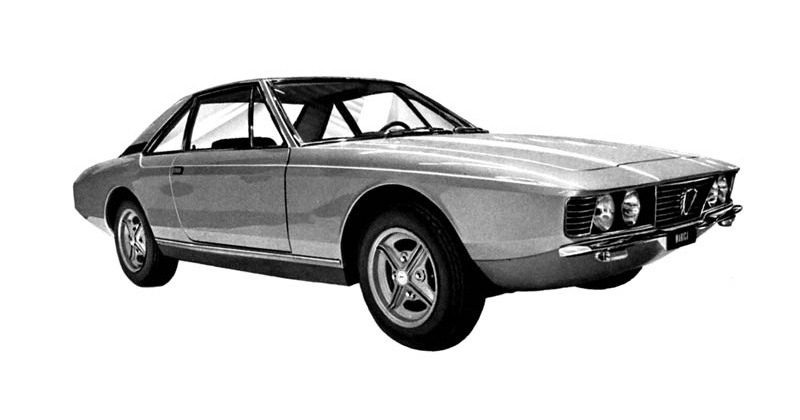
The last of the 5 “fuoriserie” Flaminia is a Coupé designed, once again, by Tom Tjaarda but this time built by Ghia. Its name “Marica” (from the mythological name of a Roman nymph), was presented at the 51st Salone dell’Automobile in Turin in 1969. This one-off was built in autumn of 1969, when the “Flaminia” was already out of production. It was built on chassis #1168, the last of the series marked by the initials 826.138 which identifies, with two exceptions (the “Speciale” by Pininfarina of 1963 and, in fact, the “Marica “) the Lancia Flaminia 3C 2800 GT with Touring Coupé bodywork. Some believes that the Marica was built at the express wish of Alejandro De Tomaso (who in 1967 had taken over Ghia) in order caught the attention of Lancia, which was in financial difficulties and was looking for a buyer. The car, classic and deliberately devoid of stylistic excesses, has an evident Lancia-style grille, strongly inclined windshield and rear window, spacious and refined interiors: the walnut wood covered dashboard is, among the main instruments, placed centrally. Other features are the electric powered windows and light alloy wheels. The truncated tail design was clearly inspired by the Fulvia Coupé. Today the Marica is part of the Lopresto Collection.

